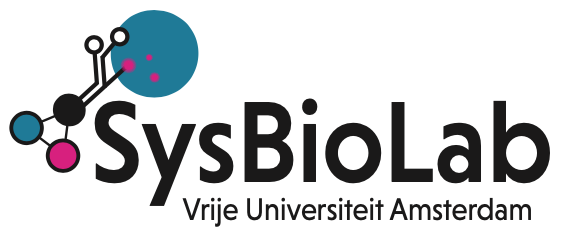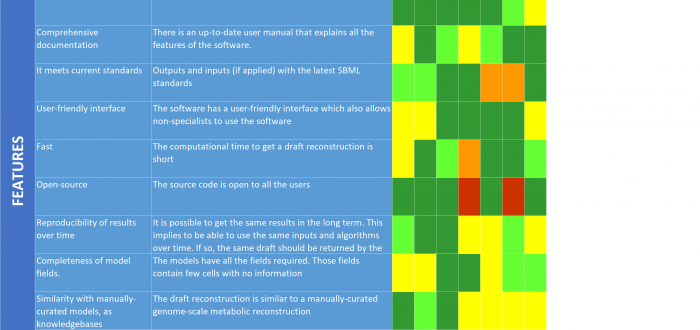A genome-scale metabolic reconstruction is a network of all biochemical reactions that can occur in a cell. These reconstructions have proven to be very useful because they can be used to make phenotypic predictions. Many computational tools to create these reconstructions have been created (or updated) recently, making these genome-scale reconstructions available for everyone. However, a potential user might not know about the best uses of each tool.
We therefore compared these different tools and published our results in Genome Biology. With the help of Brett G. Olivier, Douwe Molenaar and Bas Teusink, seven reconstruction tools were compared with regard to ease of use, compliance with standards and output network quality. For all the tools, some features such as specialist support were evaluated with a high score, while others such as automatic integration of experimental data for automatic network refinement were evaluated with a low score. In most of the cases, strengths in some tools are weaknesses in others. Overall, we show that none of the tools outperforms the other in all the studied features so users should carefully choose one tool or another (or combination of them) depending on the intended use of the model
In particular, the use of the high-quality manually-curated genome-scale models of Lactobacillus plantarum, Bordetella pertussis and Pseudomonas putida as a gold standard, allowed us to evaluate output networks generated with different tools. The research showed that some tools such as AuReMe, MetaDraft of CarveMe generated draft networks which are more similar, in terms of reactions, to manually-curated models than the ones generated with other tools. Other tools such as Pathway tools and Merlin provide a platform with several functionalities for manual curation so it may be adequate for projects where a lot of time can be dedicated to the refinement of the network. ModelSEED (and also CarveME) generates in a few minutes networks which are ready to perform FBA so it may be suitable for large scale screenings. Finally, RAVEN allows integration of multiple databases which may be useful for less characterized species. In any case, the choice will depend on the particularities of the project, so users are invited to check our article to find the perfect fit for their research.


Recent Comments